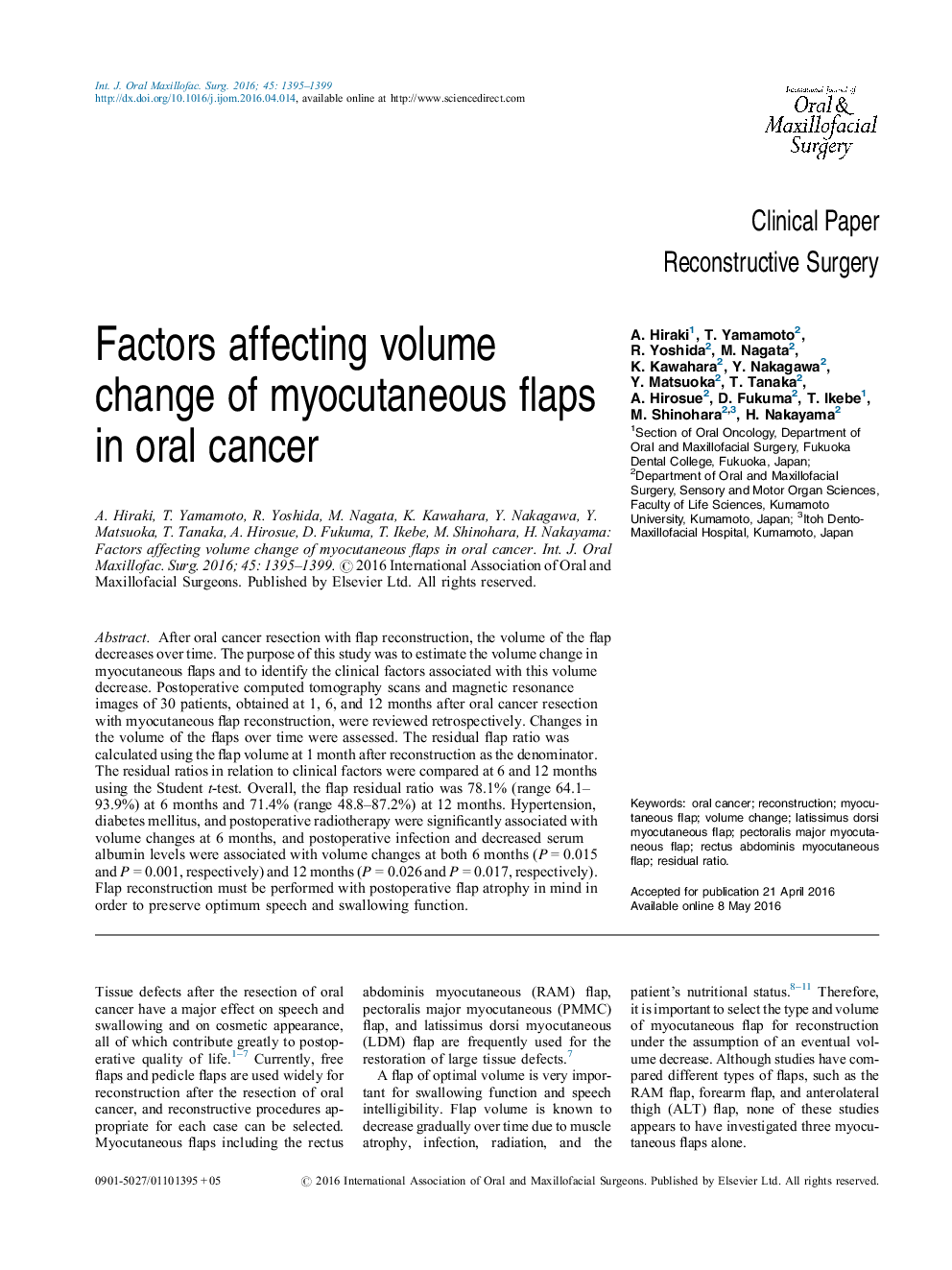| کد مقاله | کد نشریه | سال انتشار | مقاله انگلیسی | نسخه تمام متن |
|---|---|---|---|---|
| 5638928 | 1584111 | 2016 | 5 صفحه PDF | دانلود رایگان |
After oral cancer resection with flap reconstruction, the volume of the flap decreases over time. The purpose of this study was to estimate the volume change in myocutaneous flaps and to identify the clinical factors associated with this volume decrease. Postoperative computed tomography scans and magnetic resonance images of 30 patients, obtained at 1, 6, and 12 months after oral cancer resection with myocutaneous flap reconstruction, were reviewed retrospectively. Changes in the volume of the flaps over time were assessed. The residual flap ratio was calculated using the flap volume at 1 month after reconstruction as the denominator. The residual ratios in relation to clinical factors were compared at 6 and 12 months using the Student t-test. Overall, the flap residual ratio was 78.1% (range 64.1-93.9%) at 6 months and 71.4% (range 48.8-87.2%) at 12 months. Hypertension, diabetes mellitus, and postoperative radiotherapy were significantly associated with volume changes at 6 months, and postoperative infection and decreased serum albumin levels were associated with volume changes at both 6 months (PÂ =Â 0.015 and PÂ =Â 0.001, respectively) and 12 months (PÂ =Â 0.026 and PÂ =Â 0.017, respectively). Flap reconstruction must be performed with postoperative flap atrophy in mind in order to preserve optimum speech and swallowing function.
Journal: International Journal of Oral and Maxillofacial Surgery - Volume 45, Issue 11, November 2016, Pages 1395-1399
